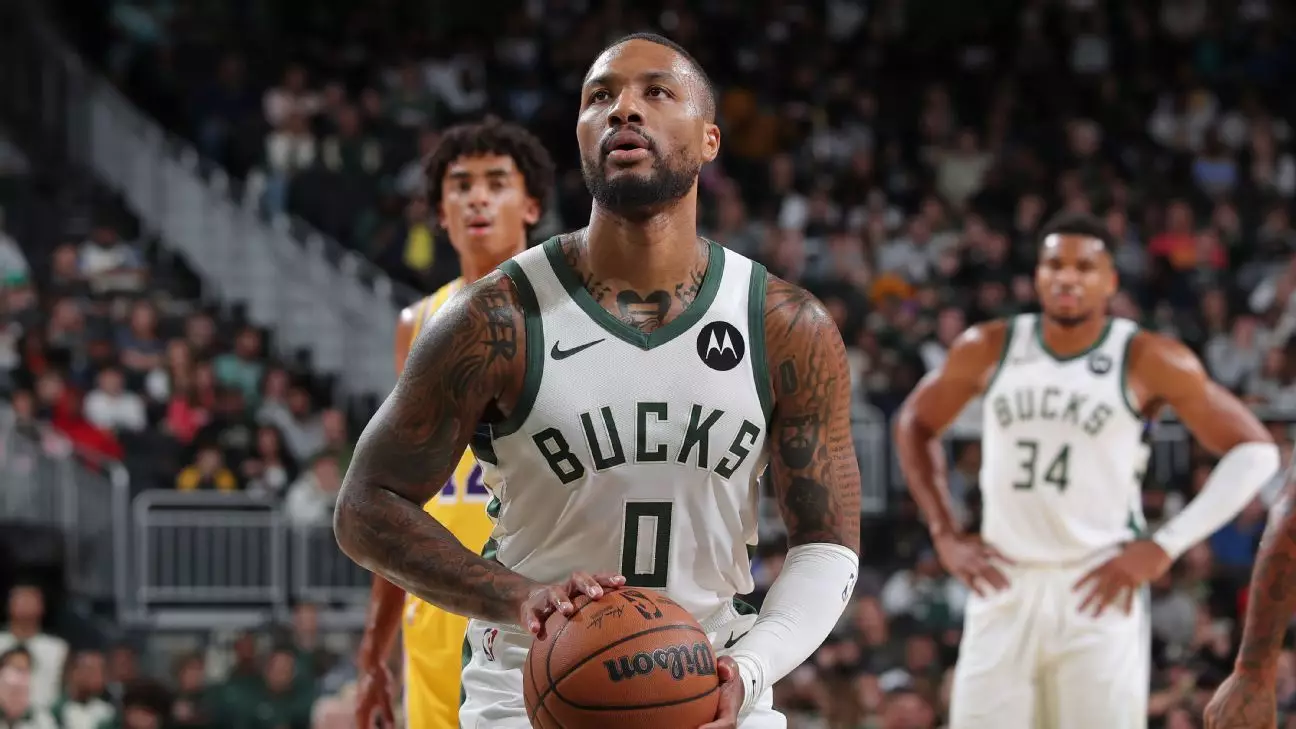The sports world was rocked recently by news that Milwaukee Bucks superstar Damian Lillard has been diagnosed with deep vein thrombosis (DVT) in his right calf. This medical condition, characterized by blood clots that can form in deep veins, poses not only a significant health risk but also a substantial challenge for both Lillard and his team. At the age of 34, Lillard is at a critical juncture in his career, and this diagnosis could have lasting implications on his performance and longevity in the league.
As recently as Tuesday, the Bucks announced that Lillard’s condition would keep him sidelined indefinitely. While the organization has assured fans that he is currently on blood-thinning medication, which has stabilized the clot, the reality remains that this injury adds a layer of uncertainty to both his health and the team’s competitive trajectory this season. Team general manager Jon Horst emphasized that the health of players comes first, indicating that Lillard’s rehabilitation process will be closely monitored and evaluated. Such statements, though reassuring, underscore the precarious nature of sports injuries—especially those involving the vascular system.
The Timing and its Consequences
Lillard’s injury strikes a particularly contentious moment for the Bucks, who find themselves grappling for playoff positioning in the Eastern Conference. Coming off a season where they encountered significant setbacks, the team has lost three of its last five games and is trying to fend off rising competition. The pressure on Lillard, not only to perform but to recover, escalates as the regular season winds down.
With only 11 games left before the playoffs, Lillard’s absence could be the determining factor in a tight race. The Bucks have shown that they can still function without him, posting an 8-5 record in games he misses; however, the statistical divergence in their scoring—plummeting from 115.7 points per game to 108.5—highlights just how essential he is to their offensive strategy. If the Bucks are to have any hope of making a significant playoff run, they will need Lillard back on the court sooner rather than later, though the caution surrounding his recovery speaks volumes about the potential long-term risks involved.
Historical Context and Future Outlook
Tragically, Lillard is not the only player facing serious health challenges this season. The case of Victor Wembanyama, who missed critical time for the San Antonio Spurs due to DVT in his shoulder, illustrates a troubling trend that could send ripples through the league. Both situations shine a light on the vulnerabilities elite athletes face and the importance of pursuing swift, effective medical intervention.
As Lillard navigates this trying time, the balance between health and ambition comes to the forefront. On the one hand, his competitive spirit and desire to contribute to a championship-caliber team remain at an all-time high. On the other, the realities of sports medicine and the need for patient recovery cannot be ignored.
This scenario serves as a reminder that, despite overwhelming physical prowess, athletes are not immune to serious health concerns. For the Milwaukee Bucks and their loyal fanbase, the hope is that they soon welcome Lillard back to the hardwood—healthy, disciplined, and ready to elevate their championship aspirations once again.

